Invasive plants: 10 non-native plants to watch out for in your garden
Invasive plants often spread quickly and can crowd out native plants, so find out about the worst offenders and how to get rid of them
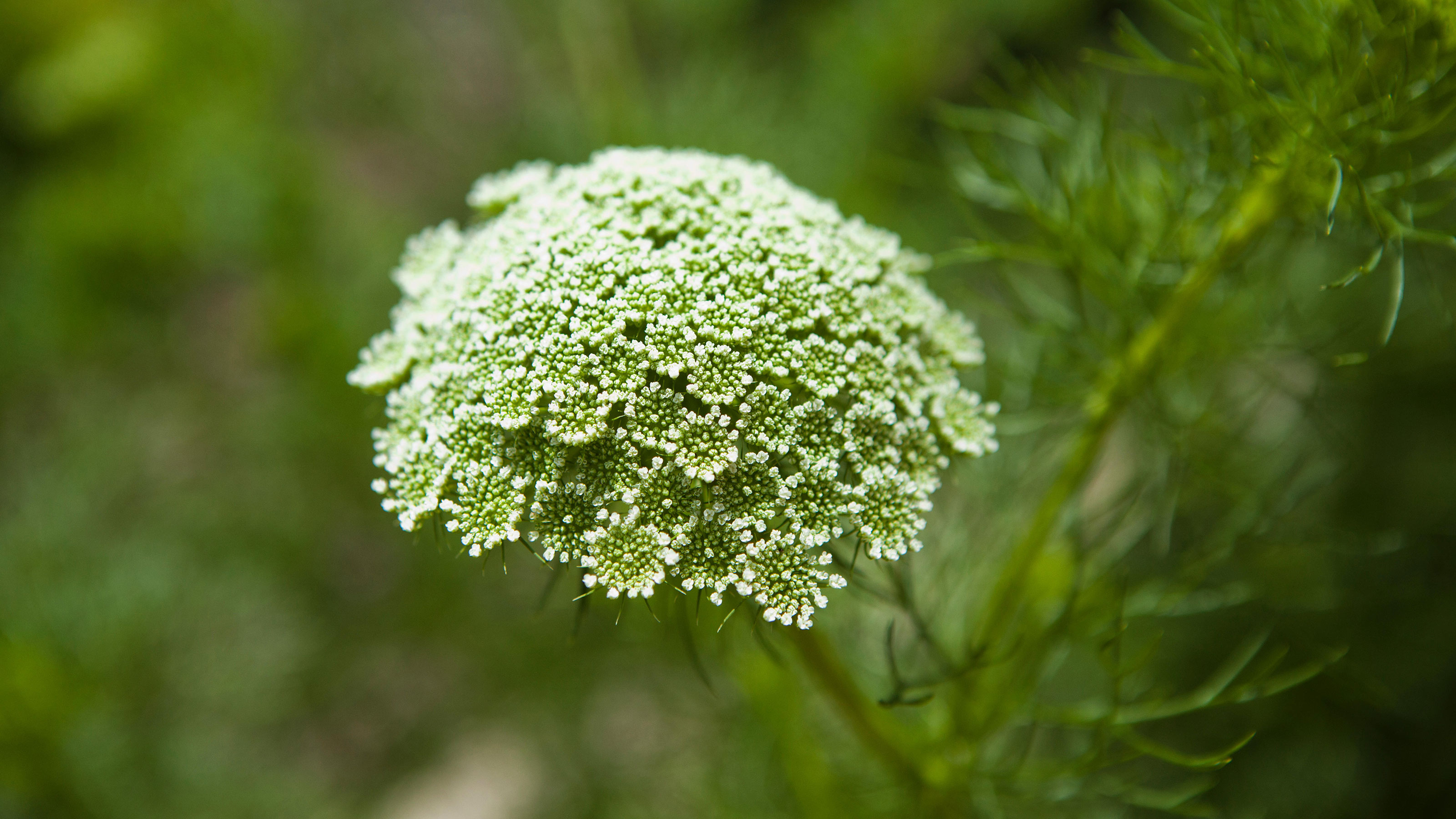

Invasive plants are those that do not grow naturally in Britain but which, if they spread from our gardens into the wild, outcompete native species.
They can crowd out slower-growing native plants, or change the natural habitat of native species by drying out the soil, casting shade, or blocking the flow of streams so that the habitat is no longer suitable for native plants.
Some invasive plants arrive in the UK by accident, some are planted as crops or to augment the landscape, and some are grown in our gardens and either spread by roots or seed or are dug up and dumped in the countryside.
The experts at the Royal Horticultural Society tell us: 'Our gardens have been greatly enriched by the introduction of plants from abroad but a small number have proved highly invasive in the UK, threatening natural habitats and native species. By not allowing plants to escape from gardens and disposing of unwanted plants and weeds carefully, gardeners can help reduce the spread of invasive non-native species.'
Legislation has been introduced to control the planting and spread of 36 different plants which are especially threatening. It is illegal to plant them in the wild or allow them to spread into the wild.
If you find them in your garden you are required to control them. As with how to get rid of weeds, hand pulling or digging is a widespread approach, although with some varieties more aggressive measures may be required.
10 invasive plants to avoid growing in your garden
Our list of the most commonly found invasive plants will give you a good idea to what to look out for, what to avoid planting in your plot, and how to get rid of the offending variety once you have found it.
1. Tree of Heaven (Ailanthus altissima)
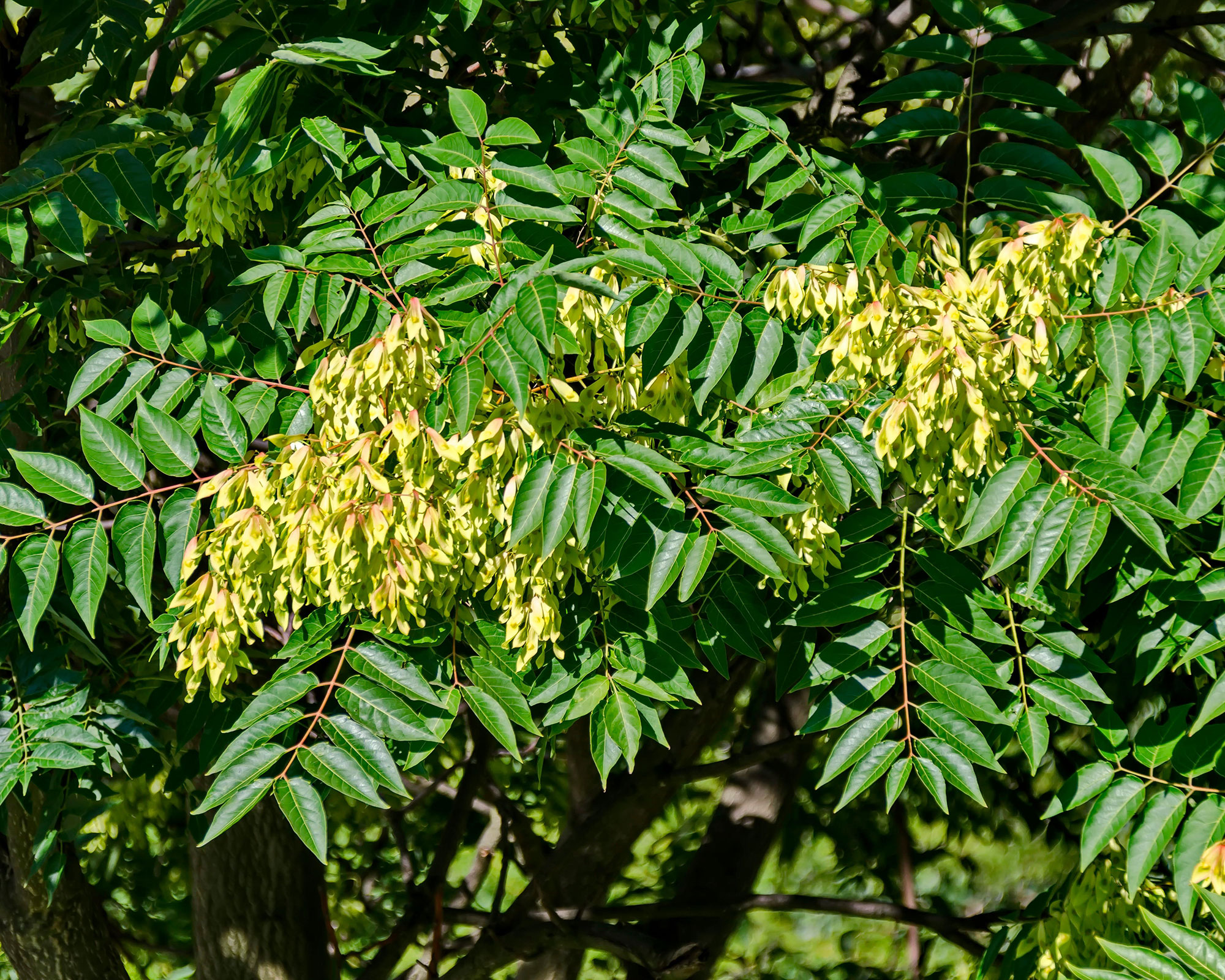
- Hardiness: RHS H5
- Spreads by: Seeds, and suckers
- Control Tree of Heaven by: Pull out seedlings by hand. On larger plants, try a combination of cutting back very hard and weedkiller application, repeated until no longer necessary
- Alternative planting option: Rowan (Sorbus aucuparia)
Tree of Heaven invades in two ways. Male and female flowers appear on separate trees, but females can produce huge quantities of seeds.
The trees also spread by suckers which can damage drains and foundations. Toxic secretions from the roots prevent other plants growing in your garden borders. Sometimes known as the Tree of Hell!
2. Fairy Fern or Water Fern (Azolla filiculoides)
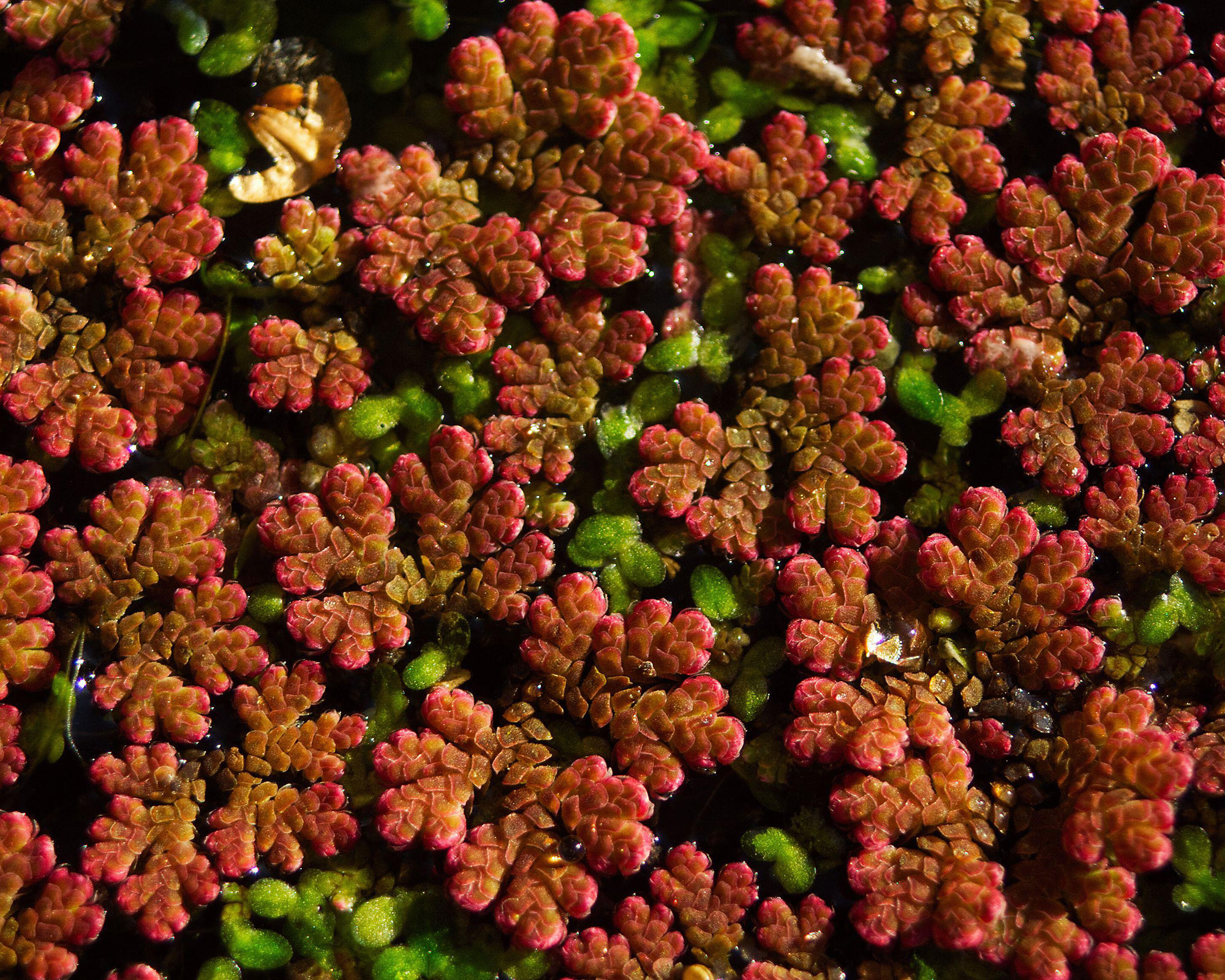
- Hardiness: RHS H3
- Spreads by: Spores and also by pieces breaking off and being carried away on the current or by wind
- Control Fairy Fern by: In summer, use a net or a floating rake to drag the growth to the bank of the pond and then remove it to the green waste collection
- Alternative planting option: Frogbit (Hydrocharis morsus-ranae)
This is a floating, aquatic fern developing into crowded mats of small, rather delicate looking, overlapping leaves that spread rapidly across the water surface. In full sun the leaves develop attractive reddish tints.
It is found in a variety of still and slowly moving waters such as slow rivers, canals, ponds, lakes and ditches as well as sheltered areas in large ponds and lakes. Eventually the mats may become up to 12in (30cm) deep.
Once sold as a pond plant, escaped plants can multiply quickly in some seasons, and more slowly in others. Fairy fern is frost tender, but a few spores or pieces will restart spring growth.
3. Hollyberry Cotoneaster (Cotoneaster bullatus)
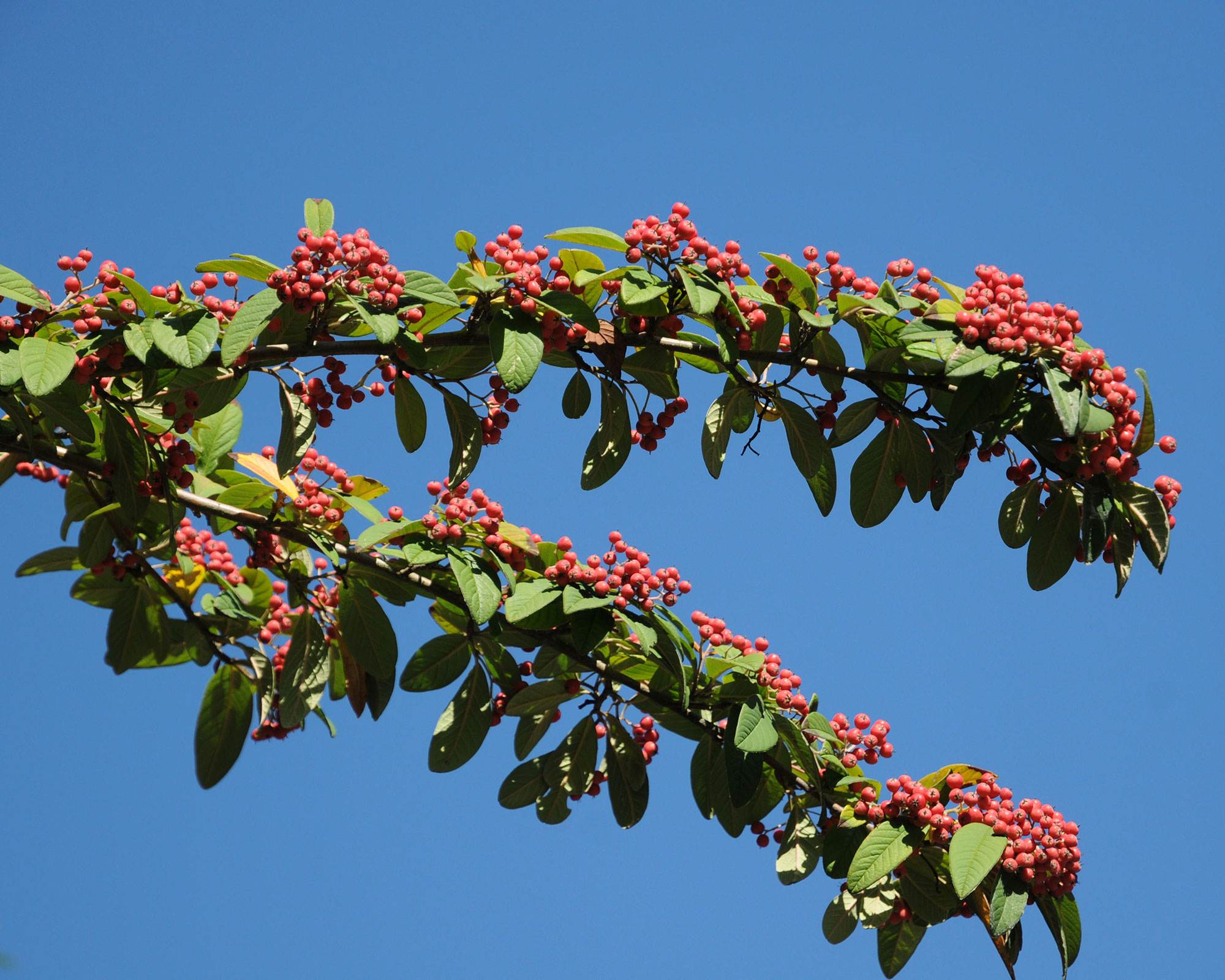
- Hardiness: RHS H6
- Spreads by: Seeds
- Control Hollyberry Cotoneaster by: Cut the plant back hard and treat the exposed wood with weed killer. It may take several treatments to kill the plant
- Alternative planting option: Holly (Ilex aquifolium)
This large deciduous shrub has gone from being a valued garden plant to being a dangerous nuisance. The corrugated, dark green 4in (10cm) leaves are very handsome and turn red and orange in the autumn.
The clusters of small white flowers open in early summer and are followed by small, brilliant red, slightly pear-shaped berries that are enthusiastically eaten, and spread, by birds.
The experts at Plantlife, the plant conservation charity, tell us: 'These popular garden and landscaping shrubs are also popular with birds who enjoy the berries and spread the seed. This introduces them into the wild, where they damage native vegetation and can be difficult to eradicate.'
4. New Zealand Pygmyweed (Crassula helmsii)
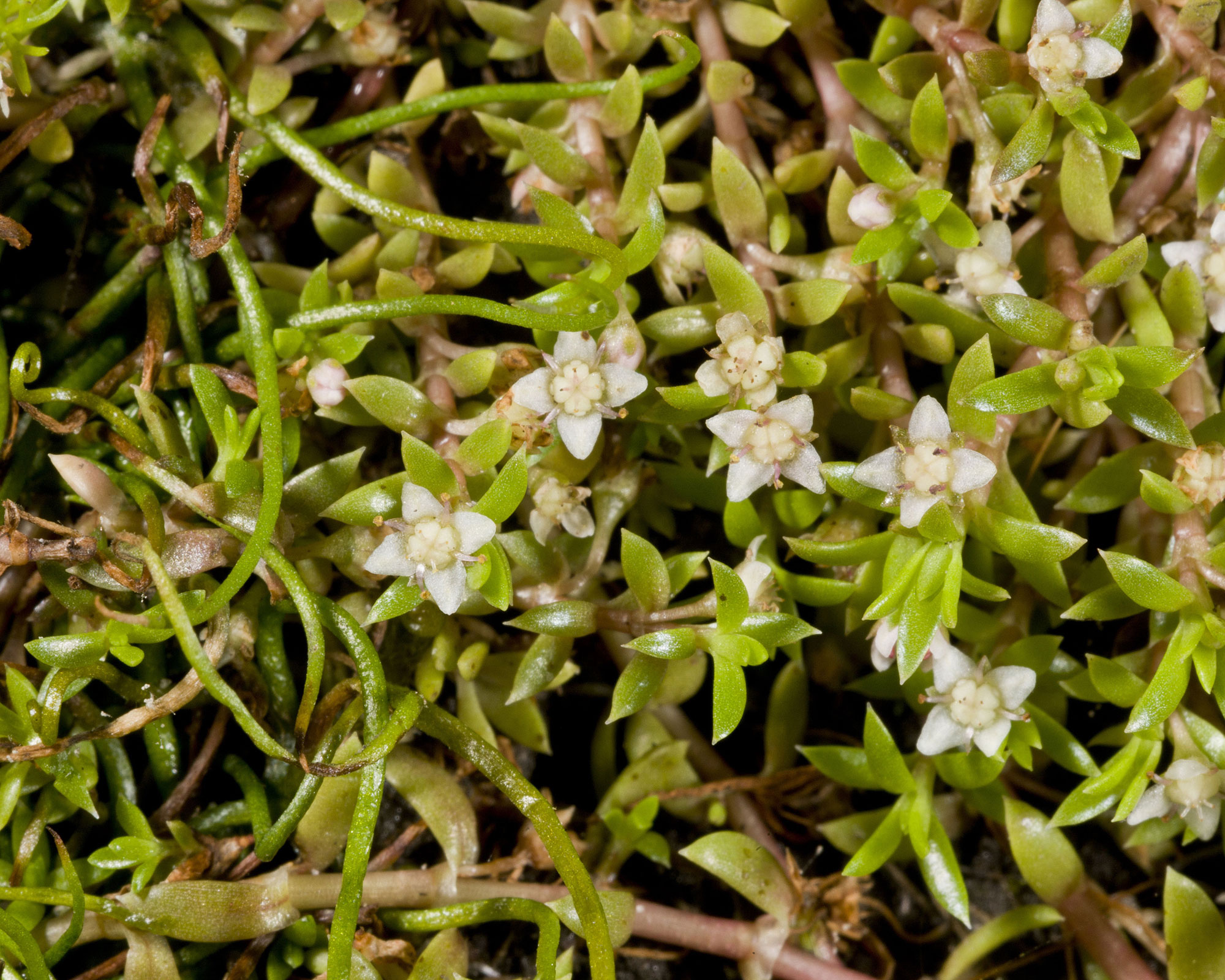
- Hardiness: RHS H5
- Spreads by: Small pieces of stem
- Control New Zealand Pygmyweed by: Collect growth from banks, or use a net or rake to gather it from the water. Even repeated removal is rarely 100% effective
- Alternative planting option: Frogbit (Hydrocharis morsus-ranae)
Forming dense and tangled carpets in soggy soil at the edges of ponds and lakes and in shallow water, partially submerged in deeper water or sometimes completely submerged, New Zealand pygmyweed grows for much of the year and does not die back in winter.
The rectangular leaves are tiny, up to an inch (2.5cm) long, from which emerge upright stems that carry the small starry white flowers above the water. However, New Zealand pygmyweed does not produce seeds.
Once sold as an oxygenating plant for garden ponds, all the plants that are invasive in Britain are descended from the same individual that was first seen in the 1950s.
5. Japanese Knotweed (Reynoutria japonica)
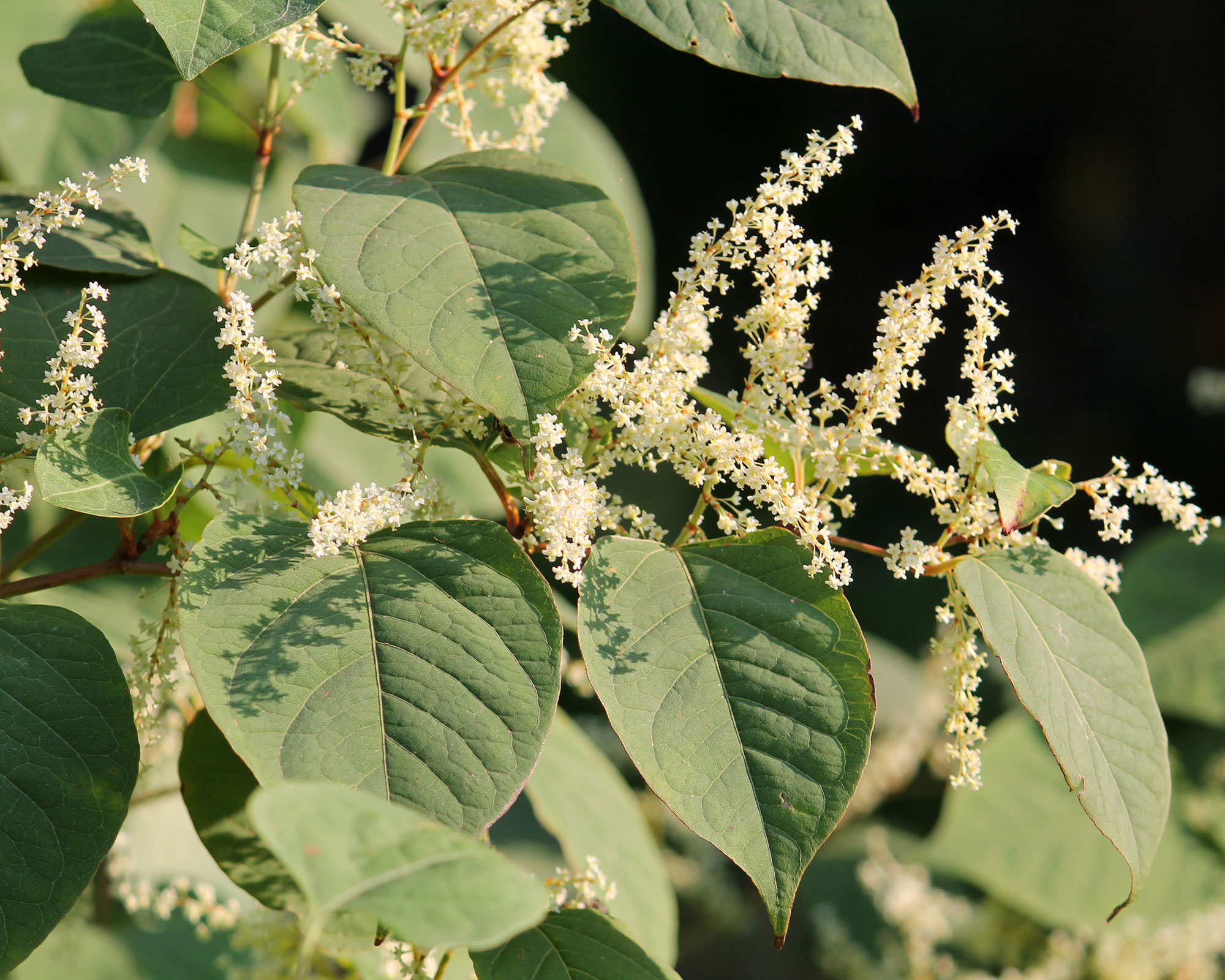
- Hardiness: RHS H6
- Spreads by: Tiny pieces of root, almost never produces seeds
- Control Japanese Knotweed by: The Property Care Association tells us: 'Its effective eradication is a job for the experts, so it’s vitally important for anyone who thinks they might have an issue with Japanese knotweed to seek professional advice'
- Alternative planting option: White Fleece Flower (Persicaria polymorpha)
Probably one of the worst invasive plants in Britain, Japanese knotweed forms dense colonies along roadsides and railways, river banks, waste ground, building sites and around new developments – almost anywhere. Its arrival on a new site is usually the result of the activities of man and Japanese knotweed was first grown in Britain as a garden plant.
In spring, red shoots emerge from roots up to 3m (10ft) deep and rapidly mature into erect, green bamboo-like stems with red speckles and carrying heart-shaped leaves followed in summer by attractive clusters of white flowers. The plant dies back to the ground in winter. Seed is very rarely produced.
6. Giant Hogweed (Heracleum mantegazzianum)
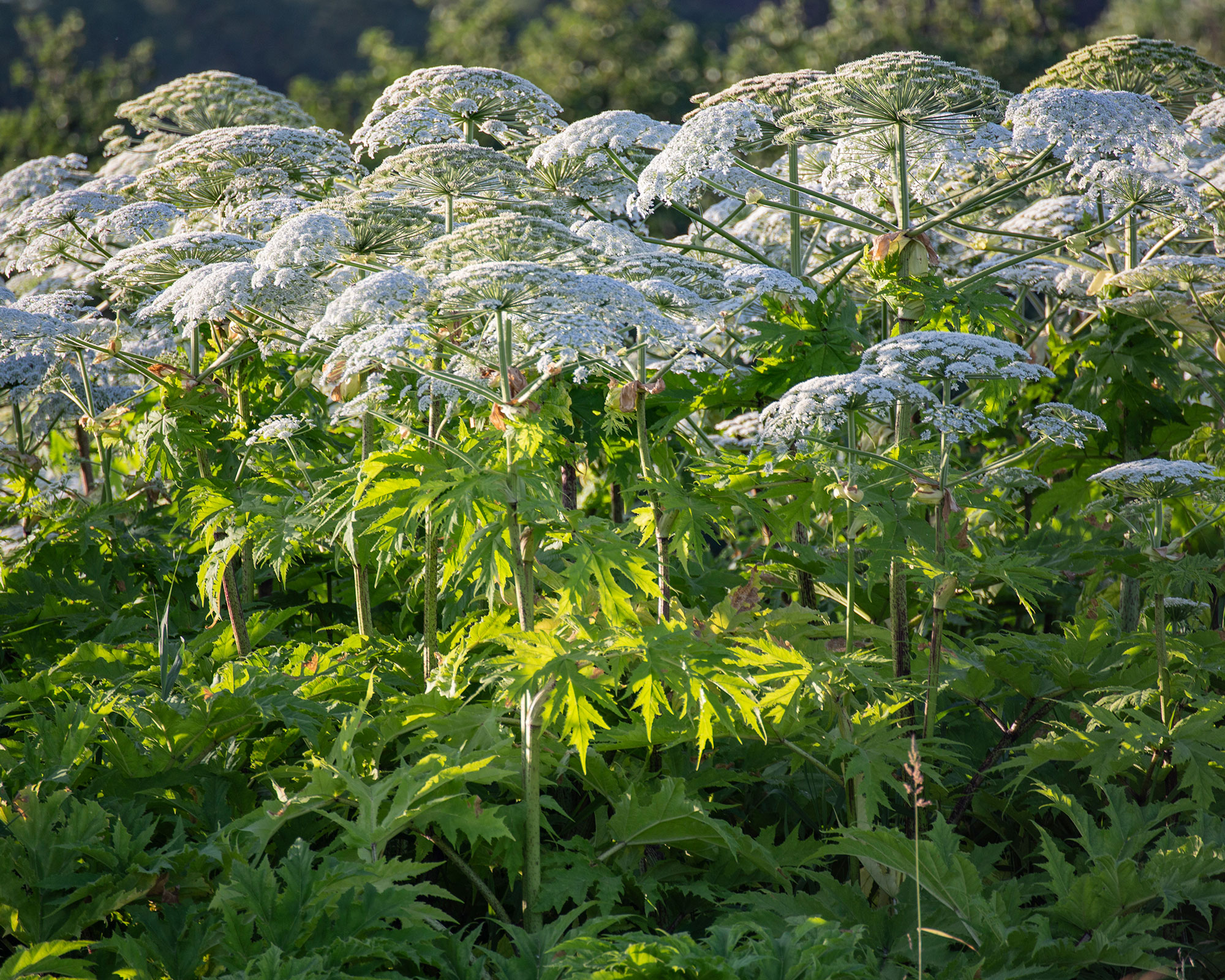
- Hardiness: RHS H5
- Spreads by: Seeds
- Control giant hogweed by: Cutting off the foliage and stems while the plants are flowering. Wear stout gloves other protective clothing
- Alternative planting option: Milk Parsley (Selinum wallichianum)
Giant hogweed is a dramatic, sculptural, biennial relation of the humble cow parsley. It reaches 6-15ft (1.8-4.5m) in height and develops huge 2-5ft (60cm-1.5m) wide boldly divided dark green leaves that spread out and smother everything around.
Then, in summer, hollow ridged stems are topped with huge umbrellas of tiny white flowers that develop a vast quantity of flat seeds. Usually, the plants develops in its first year, flowers the following year then dies shedding huge numbers of seeds.
The whole plant, but especially the stems, contains sap that sensitises the skin to ultra-violet light. The result is a very painful rash and nasty blisters which are especially dangerous to children.
7. Spanish Bluebell (Hyacinthoides hispanica)
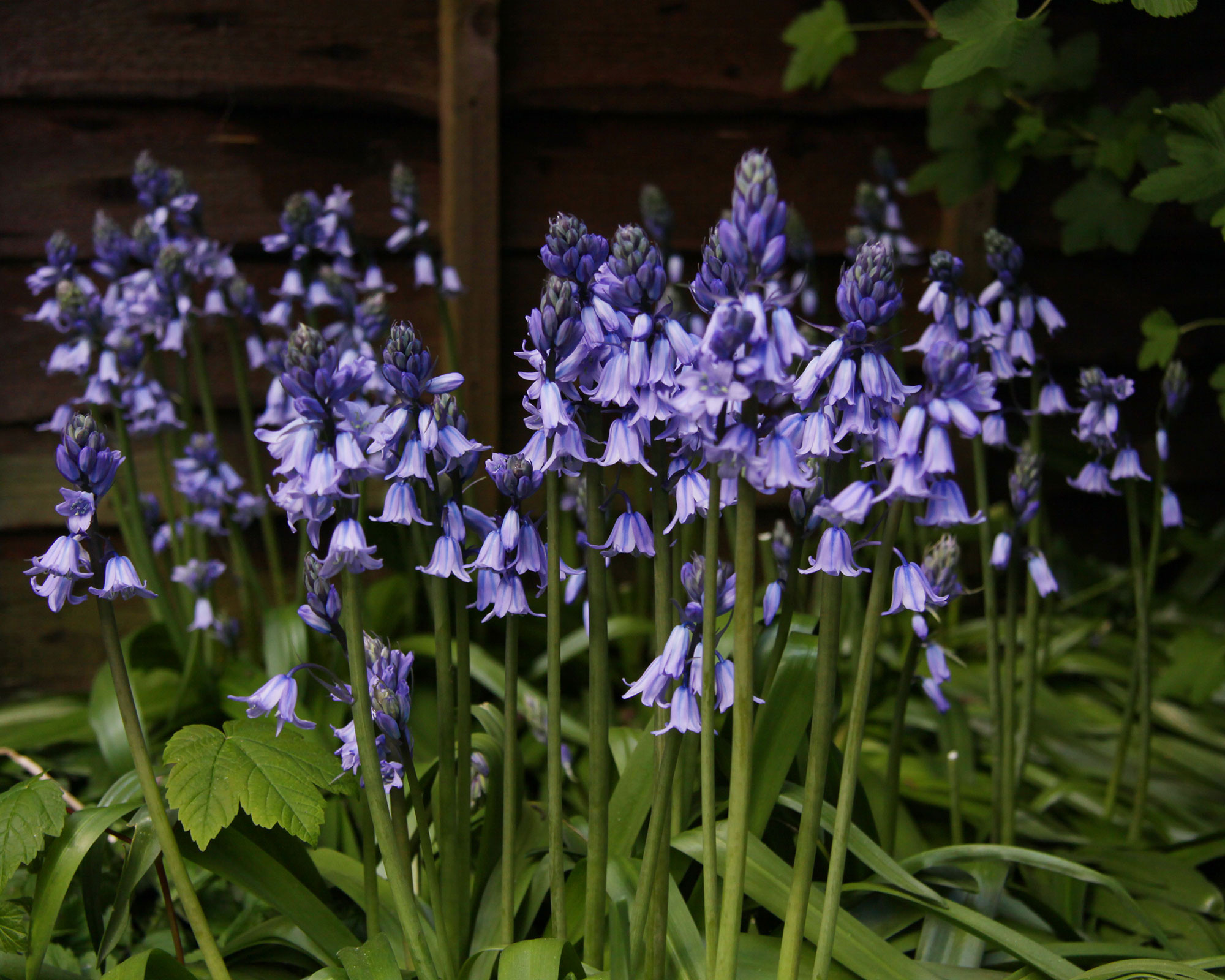
- Hardiness: RHS H6
- Spreads by: Seeds
- Control Spanish bluebell by: Digging up the bulbs when they are in flower, making sure that every small bulb is removed
- Alternative planting option: English bluebell (Hyacinthoides non-scripta)
The Spanish bluebell is, essentially, a larger version of our native woodland plant the British bluebell with broader leaves, and larger and more flared flowers, held all round the upright stems. It is an attractive garden plant and was first noticed as an escape in 1909.
The Wildlife Trusts report: 'The UK's woodlands are home to almost 50% of the world's population of the bluebell. But this much-loved plant is under threat. The Spanish bluebell is more vigorous than our native bluebell, so can outcompete it for resources like light and space.
'It can hybridize with our native, too, producing fertile plants that show a whole range of mixed features from both species. Over time, this hybridisation changes the genetic makeup of our native species, diluting its characteristics, weakening it and potentially evolving it into something else.'
8. Himalayan Balsam (Impatiens glandulifera)
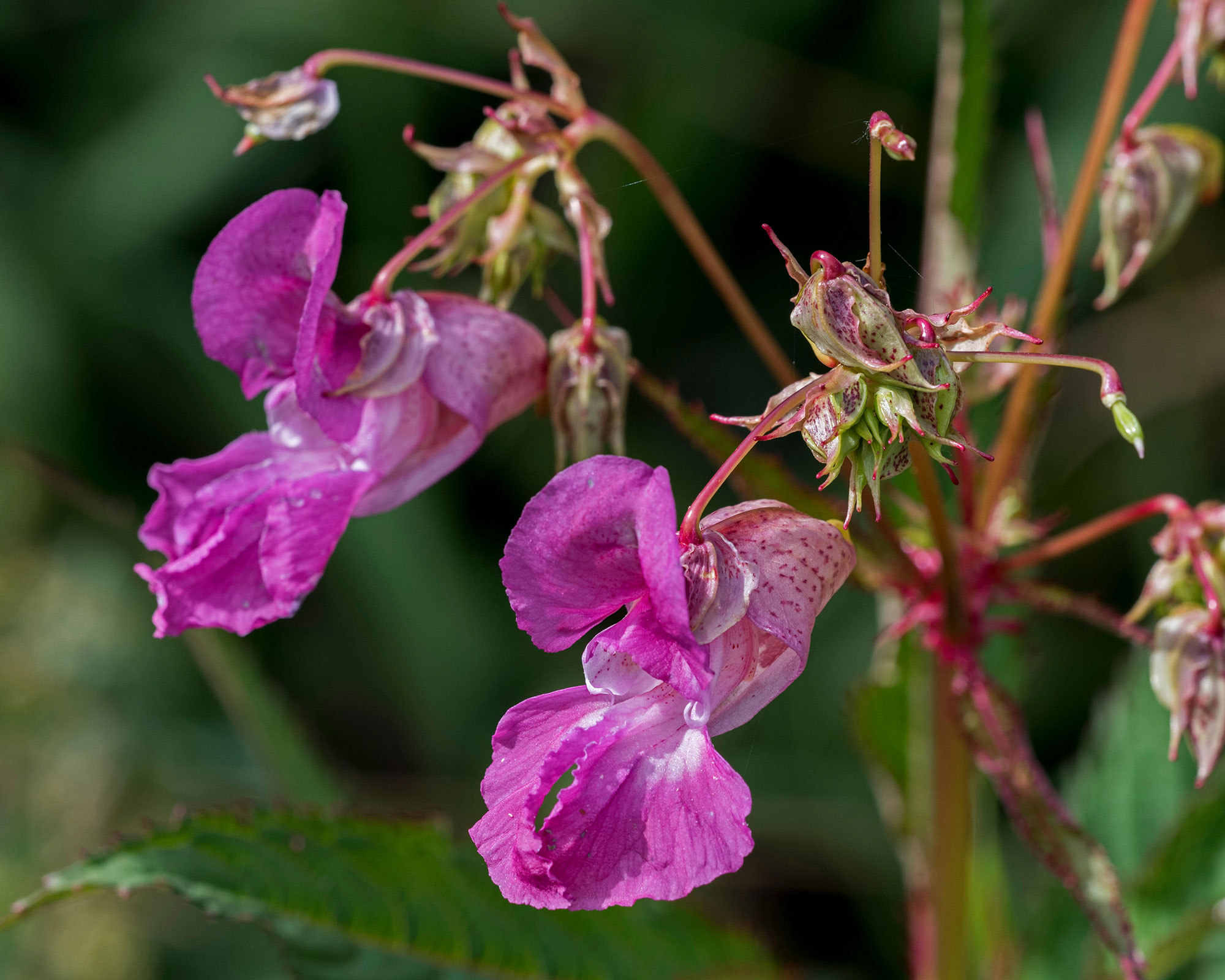
- Hardiness: Half hardy annual
- Spreads by: Seeds
- Control Himalayan Balsam by: Pull out or mow young plants before they flower and set seed. Weed killers containing glyphosate are very effective but must be applied with great care
- Alternative planting option: Touch-me-not (Impatiens noli-tangere)
This tall and aggressive relation of the busy lizzie (Impatiens walleriana) has become a serious problem, especially in damp places such as riverbanks, lakesides and ditches. It grows from 3-6ft (90cm-1.8m) high and spreads rapidly, smothering other plants.
Also known as policeman’s helmet, from the shape of the summer flowers, and jumping jack, from the popping of the seed pods as they fling out the seeds, this is a frost tender annual with soft fleshy upright stems and large flowers in red and purple and pink shades, and sometimes white.
9. Virginia Creeper (Parthenocissus quinquefolia)
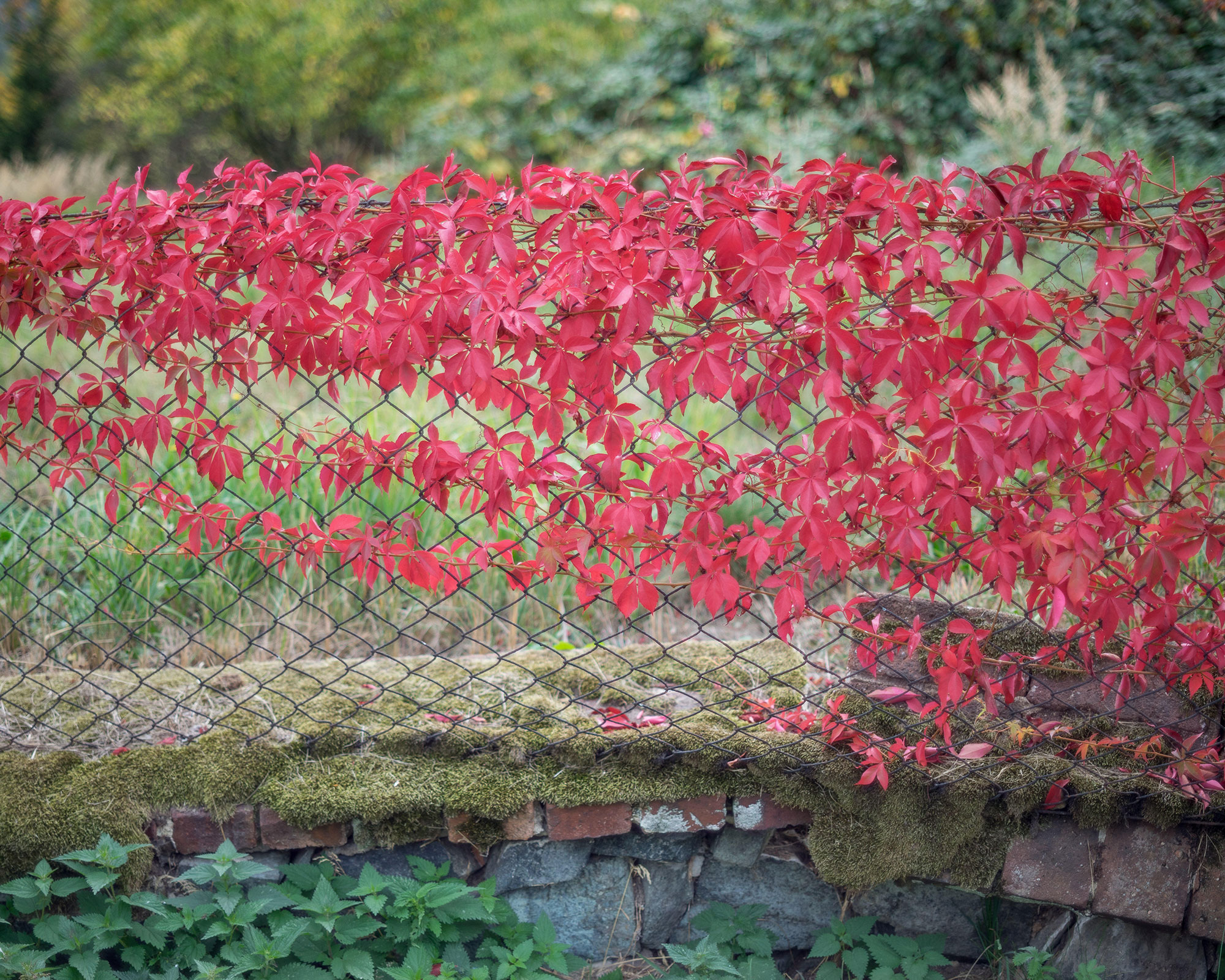
- Hardiness: RHS H6
- Spreads by: Seeds, rooting stems
- Control Virginia Creeper by: Cut back in autumn to just above the roots, then dig out the stump or treat with stump killer in spring
- Alternative planting option: Chinese Virginia Creeper (Parthenocissus henryana)
A very vigorous deciduous climbing plant, reaching 65ft (20m) or more in height, Virginia Creeper is grown in gardens for its attractive foliage that takes on brilliant fiery shades in autumn. It has now escaped from gardens and is found spreading along railway embankments, hedges, roadsides and in scrub and on waste ground.
It can climb anything, clinging to garden walls, tree bark and fences using small suckers that form at the ends of the tendrils. The tiny blue berries are distributed by birds, though are poisonous to humans, and the sap can irritate the skin.
10. Rhododendron (Rhododendron ponticum)
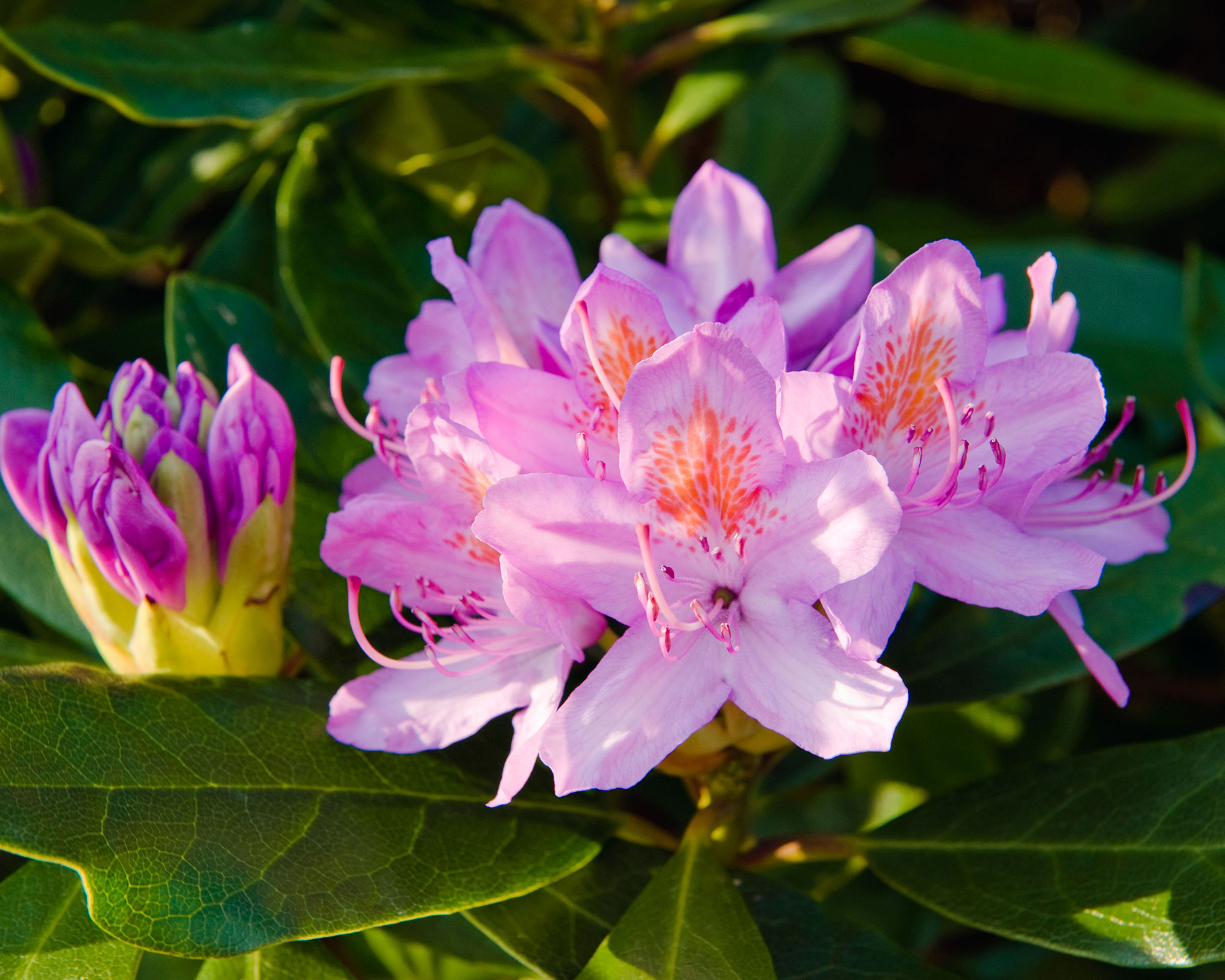
- Hardiness: RHS H6
- Spreads by: Seeds and suckers
- Control Rhododendron by: Cutting back the top growth and digging out the roots or spraying or injecting an appropriate weed killer
- Alternative planting option: Rhododendron hybrids
Rhododendron ponticum has been planted for its spectacular mauve funnel-shaped spring flowers since the 1700s but, in recent decades in particular, these resilient evergreens have spread from gardens into the countryside.
Their large, leathery foliage develops into tall, dense thickets up to 15ft (5m) high that smother a wide variety of shade-loving plants, such as wild flowers.
Rhododendron is now found over almost the whole country, on sandy or peaty, lime-free soil types mainly in woodland but also in the open.
It is estimated that the plant now covers 98,700 hectares, roughly 3.3 per cent of Britain’s total woodland.
What makes a plant invasive?
There are two features that make a plant invasive. First, invasive plants spread quickly and easily from one place to another. Sometimes seeds are carried on the wind or in running water, birds may eat them and distribute them in their droppings, seeds may cling to the fur of animals.
Parts of the plants themselves, often the roots, may be spread during road and bridge construction, plants may be dug up from gardens and dumped in the countryside, they can be carried stuck to boats, or planted to 'brighten up' roadsides and developments after construction. One way or another, invasive plants are often spread as a result of the actions, usually unintentional, of people.
Second, invasive plants damage native plants in their natural habitats by smothering them, taking over their habitats, stealing nutrients, drying out the soil, blocking waterways and replacing wild plants in their wild habitats. There is also often a secondary effect, when native plants are smothered insects that feed on them lose their food supplies.
Detailed information, including recent updates to the regulations are available from the Department for Environment, Food & Rural Affairs and the Animal and Plant Health Agency on the UK government's website.
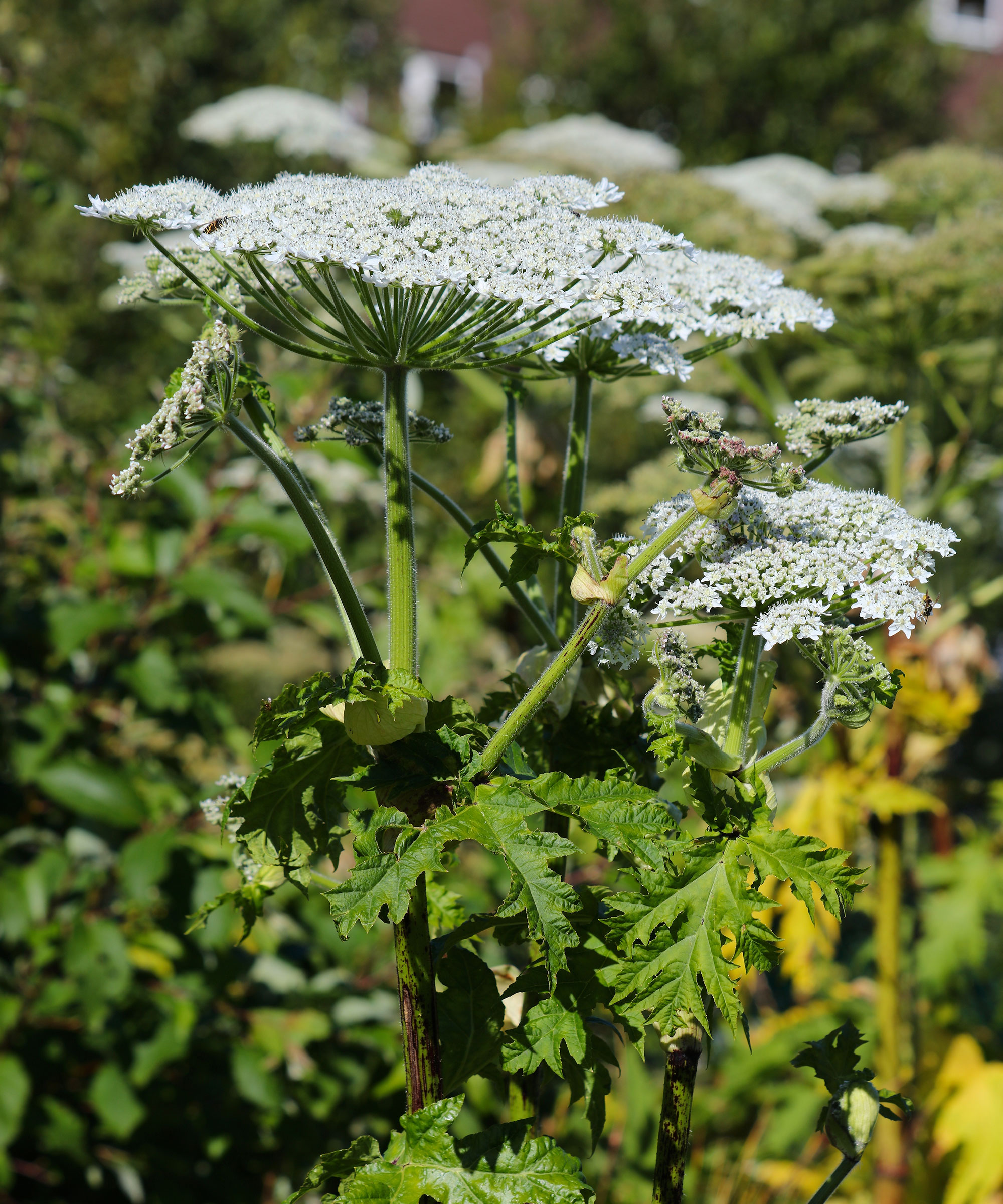
Can I use weed killer to get rid of invasive plants?
Yes, you can use one of the best weed killers, but it is important to follow the instructions very carefully.
First, be sure to choose the correct herbicide for the invasive plants that you have in mind and to follow the instructions. Second, treat invasives when they are growing strongly, usually in spring or summer.
Avoid accidentally spraying native plants while attempting to spray invasives and be especially careful when using weed killers near ponds, streams, water features or other watercourses.
Some invasive plants are more likely to be treated successfully if cut back hard and weed killer used to treat the resulting new growth.
Weed killers can also be a suitable option if you're looking for how to get rid of poison ivy and poison hemlock.

Graham Rice is a garden writer who has won awards for his work online, and in books and magazines, on both sides of the Atlantic. He is a member of a number of Royal Horticultural Society committees and the recipient of the 2021 Garden Media Guild Lifetime Achievement Award.
